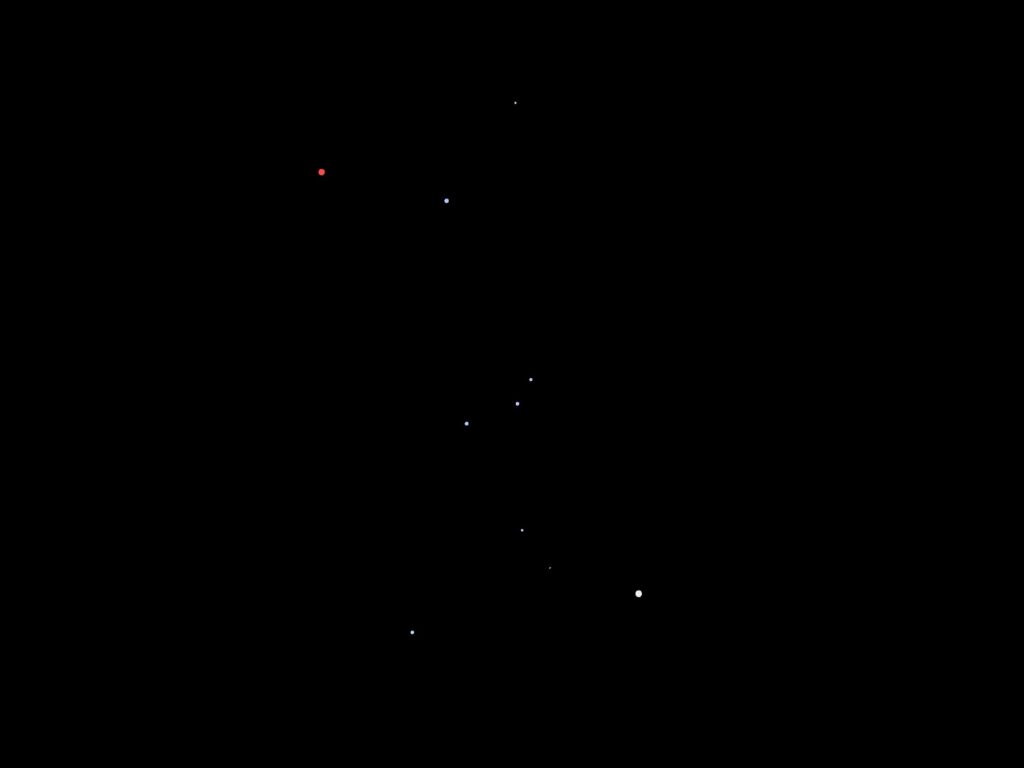Constellations as you have never seen them – or ever will see them
The title of the September talk by member Danny Thomas was “Constellations in 3D” – intriguing, very intriguing! The challenge that Danny had set himself was to model constellations so that they could be viewed from different locations far away from Earth. Quite a challenge and one which it seemed turned out to be somewhat larger than Danny had anticipated. We always see stars as though they have been pinned onto the celestial sphere, just like a budding young astronomer might put glow in the dark stars on the bedroom ceiling. We know that they are at different distances from us, in some cases greatly different distances and that can create all sorts of illusions such as optical doubles. It is one thing to know that; quite another to have it demonstrated in front of your eyes.
Danny’s modelling made use of the HYG database (found via the astronexus website) which presents a wide range of stellar data in a variety of forms. The most useful for him turned out to be the data giving the positions of stars relative to Earth in an (x,y,z) format where the components of a star’s velocity are also given along those three axes. Armed with this data, information on absolute magnitude and with growing expertise in a package called Processing2, he was able to display familiar constellations from other vantage points – and suddenly they were not so familiar after all!
The following gives just a flavour of what Danny presented to us. I hope I’ve got the details correct! It really was an exceptional piece of work and must have taken hours and hours to complete, with the promise of many more intriguing aspects to look into.
Looking at Orion
Here is an example of one of the first images Danny showed us – Orion from a slightly different viewpoint so it looks recognisable just rather twisted.#

A more extreme display showed us Orion as it looks from a direction which puts the observer much closer to Rigel than Betelgeuse, so this red supergiant seemed very faint and insignificant. In another view, Orion kept his belt but both his feet were very close together. A really surreal moment in the presentation was when Danny showed us an animation as if we were flying round Orion. In effect, Orion spun slowly round by about 90 degrees giving us a final “sideways-on” view!
Looking at the Plough
The Plough is famous for many things and these include Mizar and Alcor which are very close from our point of view. Indeed they are so close that a novice might not realise at first that there are two stars there. The pair become more obvious when you view the Plough from the side. All the stars of the asterism seem to get strung out into a bit of a line, looking nothing at all like our Plough! Within this, Mizar and Alcor are not in fact that close together. Rather less well-known is that five of the main stars are moving in roughly the same direction at the same speed, the exceptions being Alkaid and Dubhe at either end of the asterism. Danny was able to use his data on the components of velocity to run forwards in time in 1000-year steps and demonstrate this nicely. Presumably this gave him a comforting reassurance that his programming was correct.
And my favourite was …
Cassiopeia as viewed from Alpha Centauri. The familiar W shape was still recognisable… but it had gained an extra bright star, our Sun!
There was more, much more, including new looks at the Pleiades and Taurus. Thank you Danny for a genuinely eye-opening presentation, in every sense of the phrase. Hope you feel all your efforts were worthwhile!
Talk given by FAS member Danny Thomas
Post written by Katherine Rusbridge
Sept 2015
